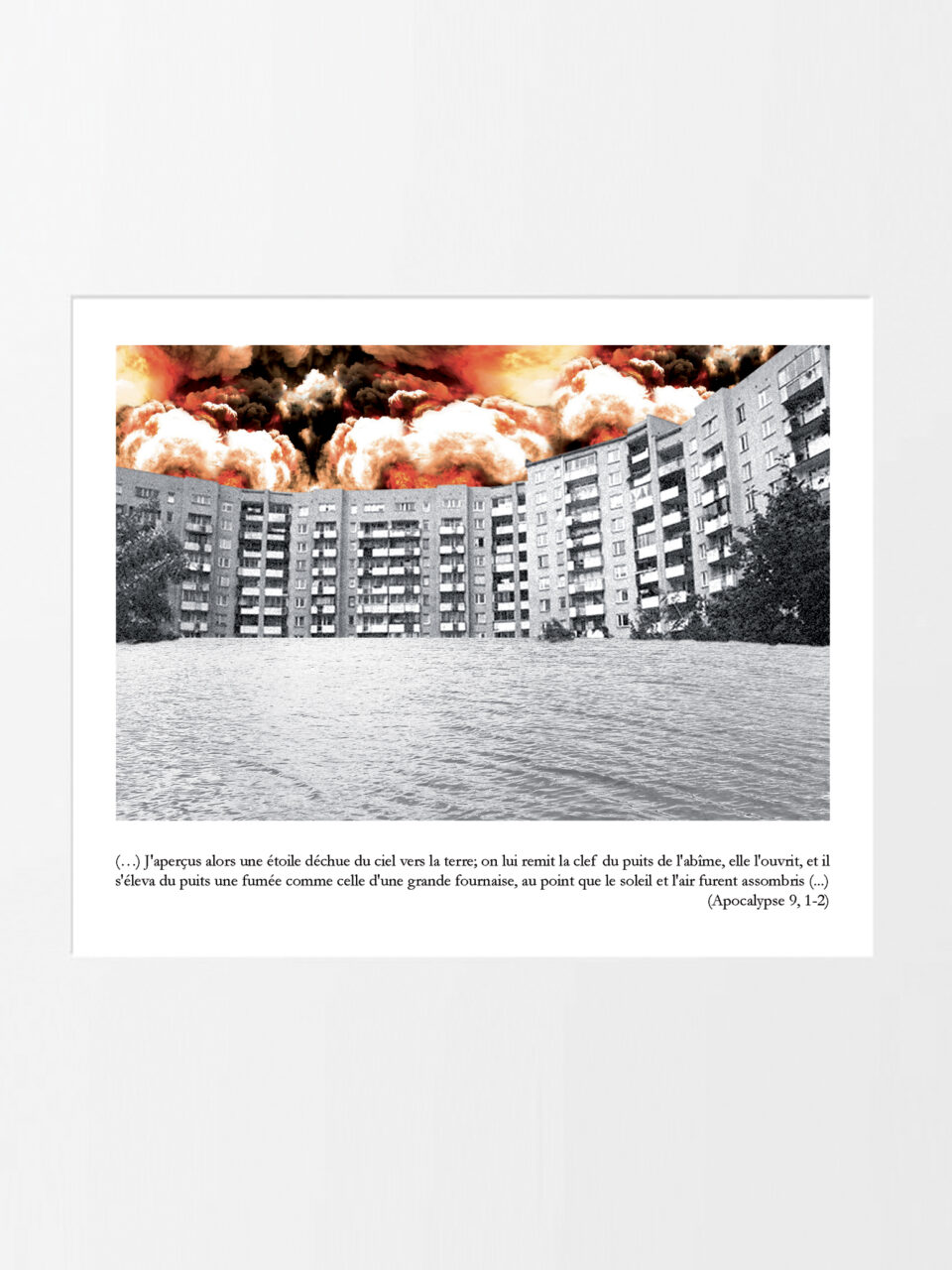Róża Spola / Rose Slavy, Untitled III (from the « Small Apocalypse » series)
2010, ed 1/5 + 2AP, 15 x 10 cm, 30 x 40 cm (framed)
Photomontage, inkjet print on Fine Art Epson paper, wooden frame
Photomontage, impression jet d’encre sur papier Epson Fine Art, cadre bois
Neither earth nor heaven bring me forth, but wings of fire bring me forth (…) » (Pseudo-Baruch Apocalypse, 6)
The “Little Apocalypse” series by Róża Spola + Rose Slavy associates the ancestral symbol of fire with Polish urban landscapes inherited from the socialism. Evoking destruction and rebirth, good and evil, heaven and hell, flames always bring change. A sign of war and its fires, it is also a mark of the human and divine presence, like the biblical burning bush. The quotations associated with the images testify to the poetic force of fire in the history of ideas.
Poland, the land of great upheavals, is evoked in the series by the fantastic visions of an unexplained cataclysm. The blocks of buildings, symbol of the fall of modernist utopias, become, in these « postcards of the catastrophe », the sites of disturbing and mystical events. These apocalyptic visions, created in 2010, appear twelve years later, like a strange and sad premonitory dream…
« (…) Ni la terre ne m’engendre ni le ciel : ce sont les ailes du feu qui m’engendrent (…) » (Pseudo-Baruch Apocalypse, 6)
La série “Petite Apocalypse” signée Róża Spola + Rose Slavy associe le symbole ancestral du feu avec les paysages urbains polonais hérités du socialisme. En évoquant la destruction et la renaissance, le bien et le mal, le paradis et l’enfer, les flammes apportent toujours un changement. Signe de la guerre et ses incendies, le feu marque également la présence humaine et divine, comme le biblique buisson ardent. Les citations associées aux images témoignent de la force poétique du feu dans l’histoire des idées.
La Pologne, cette terre de grands bouleversements, est évoquée dans la série par les visions fantastiques d’un cataclysme inexpliqué. Les barres d’immeubles, symbole de la chute des utopies modernistes, deviennent, dans ces « cartes postales de la catastrophe », les lieux d’événements inquiétants et mystiques. Ces visions apocalyptiques, créées en 2010, paraissent douze ans plus tard, comme un étrange et triste rêve prémonitoire…



